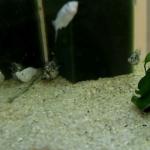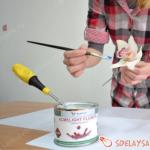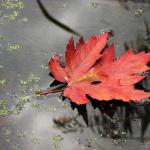Paniculate and tree hydrangeas: varieties, photos and descriptions
Hydrangea is an incredibly beautiful and original shrub. In the world, it has a large number of varieties, but in our area the most common of them are paniculate and tree-like. They can often be found in gardens in different parts of our country.
In the material we will tell you what varieties of hydrangeas exist, how they differ from each other, what are the features of plant care. You will also see a photo of paniculate and tree hydrangea.
Features of panicled hydrangea: plant photo
Hydrangeas first appeared in Europe in the 18th century, where they were brought from Japan. Varieties began to be bred in the 20th century, now there are more than 100.
The key differences between panicled hydrangea and tree hydrangea are:
- a paniculate plant resembles a tree, and a tree-like plant resembles a shrub (this can be clearly seen in the photo);
- it tolerates cold better.
If we talk about panicle hydrangea, its varieties are very rich in terms of shades. It can also be indoor, such a flower can be grown not only in the garden, but also on the balcony.
Key Features plants are:
- inflorescences in the form of panicles, differ in pomp and bright shade, their length reaches 25 cm;
- plant height can be 10 meters;
- the structure and shape of the leaves of panicled hydrangea depends on its variety. So, they can be velvety or smooth, serrated and ovoid.
- Hydrangea paniculata not only performs decorative functions. It also has the following medicinal properties:
- helps improve the functioning of the urinary system;
- normalizes the kidneys;
- saves with prostatitis.
The garden hydrangea is said to be the guardian of the garden owner.
Hydrangea paniculata: varieties
Below we present to your attention several categories of panicled hydrangea varieties with their descriptions. You can see some species with your own eyes in the presented photos.
Such varieties are most often grown in central Russia. They differ in height, inflorescence, shades and shape of the leaves. Care for them is about the same, so varieties differ only in appearance:

The most attractive varieties of paniculate hydrangeas (photo)
And there are varieties of hydrangeas that distinguished by their attractive appearance. Below is a list of them, some samples are present in the photo:

New species
New varieties of panicled hydrangeas appeared not so long ago, but already gained popularity among gardeners. Below is a description of some of them:

Features of caring for panicled hydrangeas
Despite the abundance of varieties of panicled hydrangeas, their care is mostly the same. It is quite simple and does not require special skills. Remember that hydrangea is very fond of moisture and needs regular watering. It is better to choose an acidic soil, if it is not acidic enough, then you can make up for this with the help of copper sulfate.
The landing site should be in the sun or partial shade, there should not be strong winds. This plant tolerates winters well, but it is better to cover them when it is cold.
Shrubs are pruned in early spring for subsequent abundant flowering. Pruning should not start when sap is flowing.
Hydrangea needs regular feeding, mineral fertilizers are applied every 2 weeks, organic fertilizers - once every 4, respectively. Feeding stops with the onset of autumn.
pruning
Pruning needs to be done very carefully. If it is carried out correctly, then only this can guarantee good flowering. spring plant pruned until buds appear and after the snow melts.
The panicled hydrangea has a peculiarity - it grows and the number of its shoots increases. Inflorescences at the same time become smaller. That is why it is recommended to prune the plant.
For good flowering, you need to thin out last year's shoots that grow from one point, while leaving a maximum of two. This will create an influx of light for the inflorescences.
Tree hydrangeas: varieties and photos
tree white hydrangea originally from North America where it grows naturally. There are also many varieties of this type of hydrangea, below we list the most famous:

Features of planting, reproduction and care
Before planting in the garden or on a site of a tree-like hydrangea, you need in advance:
- hold the cuttings or seedlings of the plant in a warm liquid diluted with a solution of potassium permanganate;
- plant them in composted soil;
- water abundantly.
As an option, you can make a mini greenhouse, which will allow the plant to adapt faster. It is necessary to replant the plant only when it is warm, for example, in spring, and only in the morning. Gently uproot the plant and try to keep the roots as much as possible.
Garden hydrangea of a tree type is propagated by division or cuttings. Dividing by a bush can be a problem for beginners. If you do not know the case, you can damage the plant. It should be planted by cuttings in the fall in wet weather.
Caring for a tree hydrangea largely depends on its variety. Each variety has its own characteristics and requirements in relation to the soil, sunlight and moisture regime.
Getting ready for winter
 When preparing a plant for winter, you need to do the following:
When preparing a plant for winter, you need to do the following:
- cut the dried branches and pick the leaves;
- cover the plant at the base with sawdust;
- cover it with boards;
- tilt the bush and tie it with a rope, then secure everything;
- cover the hydrangea with a waterproof film;
- From above, we fall asleep with a plentiful layer of sawdust.
All this will contribute to the fact that the plant will bloom well for more than one year.
The plant needs pruning twice a year. The first time it is cut in the fall to give shape and remove dead branches. And the second time pruning is carried out before wintering shrubs. All cut branches are treated with a solution of potassium permanganate, then covered with a thick wax layer.
Diseases and pests
Often pests are the reason that the hydrangea ceases to bloom magnificently. The spider mite negatively affects not only the foliage, but also the root system, as a result of which the leaves turn yellow and rot.
Dangerous diseases for tree hydrangea is:
- fungal diseases;
- false powdery growth;
- chlorosis, which develops due to a large amount of humus.
Regardless of which variety and type of hydrangea you have chosen for your garden or summer cottage, you need to properly care for it, and it should also look harmoniously against the general background with the rest of the composition of other plants.


















